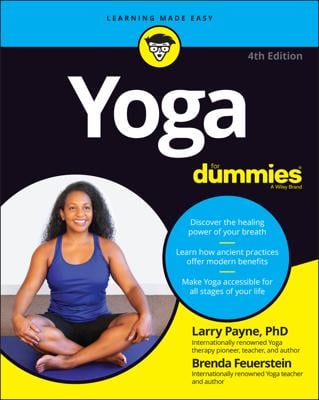You can help alleviate stress through the simple practice of yogic breathing techniques. Among other things, yogic breathing loads your blood with oxygen, which, by nourishing and repairing your body’s cells, maintains your health at the most desirable level. Shallow breathing, which is widespread, doesn’t oxygenate the blood circulating in your arteries and veins very efficiently. Consequently, toxins pile up in the cells. Before you know it, you feel mentally sluggish and emotionally down, and eventually organs begin to malfunction.
Practicing yogic breathing
Pain clinics across the country use breathing exercises for pain control. Childbirth clinics teach yoga-related breathing techniques to both parents to aid the birthing process.
Yogic breathing is like sending a fax to your nervous system with the message to relax.
One easy way to experience the effect of simple breathing is to try the following exercise:
Sit comfortably in a chair.
Close your eyes and visualize a swan gliding peacefully across a crystal-clear lake.
Now, like the swan, let your breath flow along in a long, smooth, and peaceful movement. Ideally, inhale and exhale through your nose.
If your nose is plugged up, try the combination of nose and mouth, or just the mouth.
Extend your breath to its comfortable maximum (inhaling as deeply as you can, and exhaling as fully as you can) and repeat this inhale and exhale 20 times; then gradually let your breath return to normal.
Afterward, take a few moments to sit with your eyes closed and notice the difference in how you feel overall.
Can you imagine how relaxed and calm you would feel after 10 to 15 minutes of conscious yogic breathing?
Safe yogic breathing tips
Take time to reflect on a few safety tips that can help you enjoy your yogic breathing experience:
If you have problems with your lungs (such as a cold or asthma), or if you have a heart disease, consult your physician first before embarking on breath control even under the supervision of a yoga therapist (unless he or she happens to be a physician as well).
Don’t practice breathing exercises when the air is too cold or too hot.
Avoid practicing in polluted air, including the smoke from incense; whenever possible, practice breath control outdoors or with an open window: Negative ions are positive for your health, at least in moderation. These ions are electrically charged atoms with a negative charge. Positive ions are produced by your TV and computer and have been connected with fatigue, headaches, and respiratory problems.
Don’t strain your breathing — remain relaxed while doing breathing exercises.
Don’t overdo the number of repetitions.
Don’t wear any constricting pants or belts during breathing exercises.

